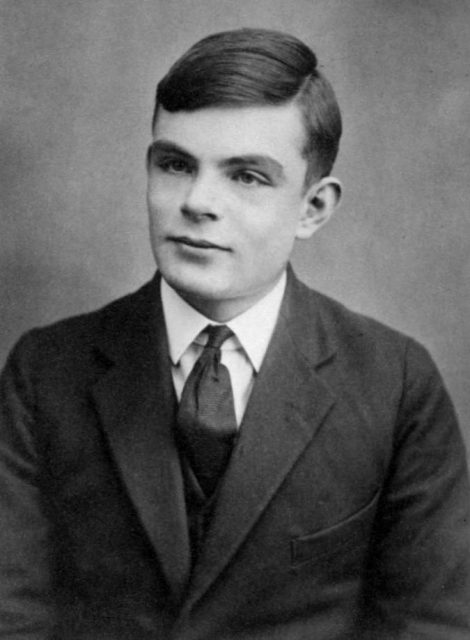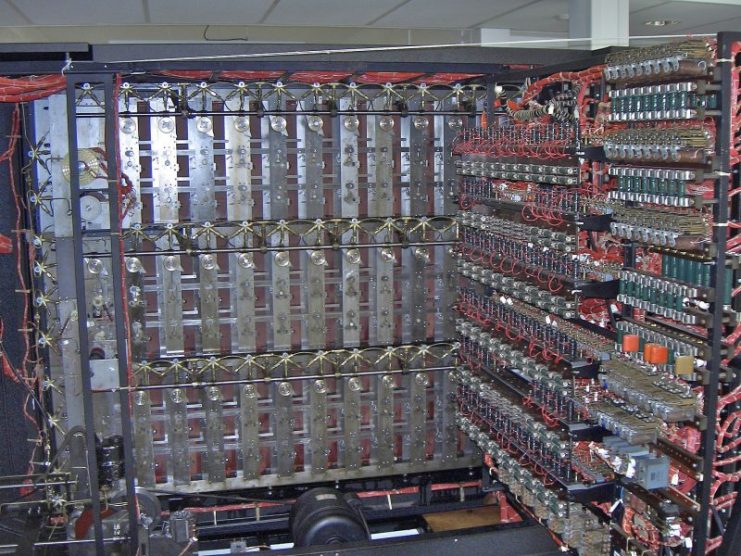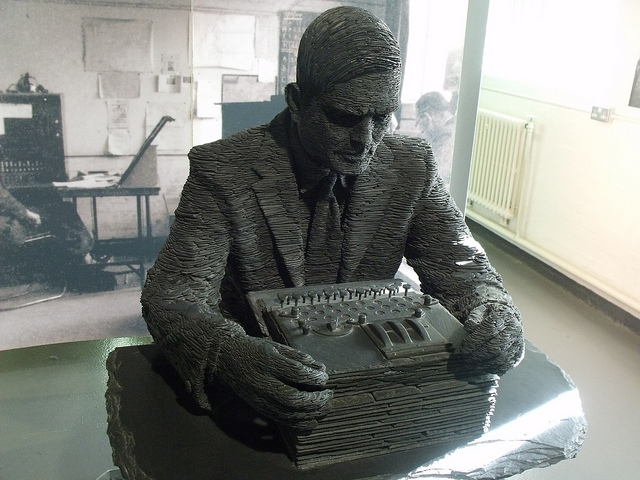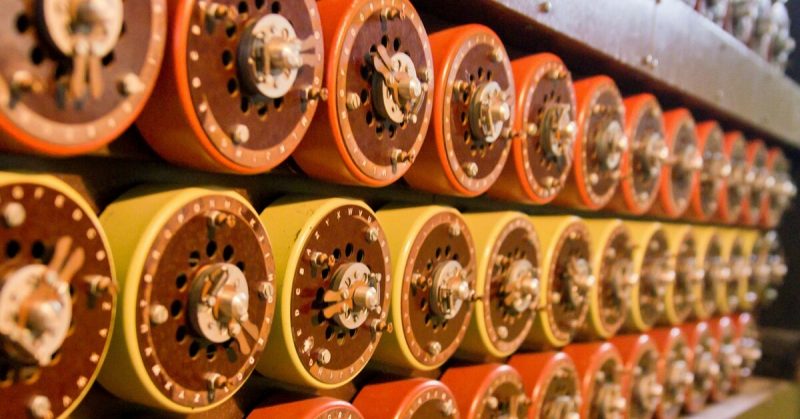It has recently been disclosed that Alan Turing’s Bombe Machines, used to decipher German codes produced by the Enigma cipher machines during World War II, were not destroyed as was originally believed. In fact, they were kept until 1959, when the Government Communications Headquarters of Great Britain finally destroyed them for being obsolete.
Alan Matheson Turing was born in 1912 in London, England. Turing was educated at Sherborne Boarding School in Dorset, where his brilliance in mathematics was observed early on. Bored with the curriculum, Turing took it upon himself to study advanced mathematical theories in his free time. His headmaster at Sherborne claimed, “If he is to be solely a Scientific Specialist, he is wasting his time at a public school.”
Turing then was granted a scholarship to King’s College, Cambridge, and graduated with honors acquiring a degree in mathematics. When he was twenty-two, he was granted a Fellowship. The atmosphere at King’s College was easygoing enough to allow Turing to expand his interests in practical uses for mathematics. It also gave him a sense of safety because of his homosexuality. After King’s College, Turing earned his PhD at Princeton University.

Turing worked with his professor at Princeton, American mathematical logician Alonzo Church, to develop the Church-Turing thesis, stating that anything humans could compute could be computed by Turing’s universal computing machine.
After the war, Turing received the honor of being made Officer of the Most Excellent Order of the British Empire for his work at Bletchley Park and joined the National Physical Laboratory in London to create his first electronic computer, the Automatic Computing Engine, in 1950. He also wrote the first programming manual and the first digital computer to hit the market in 1951, the Ferranti Mark I, used his programming.

Although Turing had received accolades since primary school, he was damned by society for his homosexuality. His work at Bletchley Park was a major factor in the success of the Allied Forces to win the war, but he was now considered a security threat.He was put on trial, convicted of gross indecency and forced to endure treatment to “cure” his homosexuality.
In the midst of groundbreaking work on the development of form and pattern in living organisms in 1954, he was found dead in his bed at the age of forty-two. The death appeared to be from cyanide poisoning, causing it to be considered a suicide. Although unlikely, suicide may have been possible but his friends at the time denied his mental state was out of the ordinary. It is also possible that he was accidentally poisoned during his chemical experiments and some believe he was murdered by a closed minded government that mistrusted alternative lifestyles.
In 2013, Turing’s conviction was overturned by Queen Elizabeth II, who granted a posthumous pardon.

The Enigma cipher was a machine that took a typed message and by way of notched wheels allowed the writer to scramble the message. It could only be deciphered by knowing which notched wheels were used to scramble it. Invented in 1923 by German engineer Arthur Scherbius, its original use was for manufacturers to transfer proprietary information in secret. Enigma was housed in a wooden box and resembled an old-fashioned telephone switchboard using typewriter keys, wired plugs, gears and wheels using electric signals. When World War II broke out, and the Nazis commandeered the machines, the Allies realized they needed to break Enigma’s codes to stay ahead of the Axis powers.
At first, neither the French nor the British Intelligence were able to decipher Enigma’s codes. The Polish Cipher Bureau was able to build a copy of Enigma due to its proximity to German technology. When Polish officials became aware of Hitler’s plans to annex Poland, they shared the information with the British, lest it should fall into German hands and alert them to the Allies abilities to crack codes. Britain’s Government Code and Cipher School at Bletchley Park, Buckinghamshire, was the Allied headquarters for mathematicians and early computers called “bombes”, were used to learn and understand how Enigma worked. The bombe code machine allowed British Intelligence to crack almost forty thousand coded messages sent by the Nazis each month in 1942.
